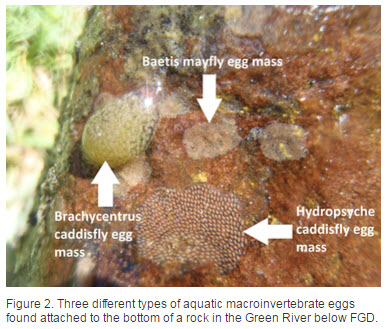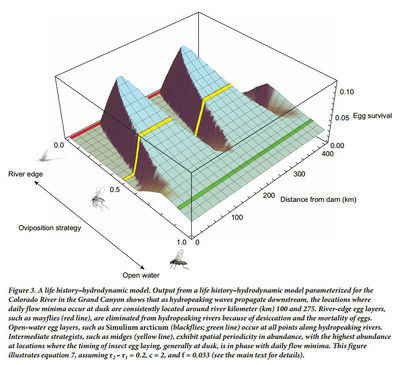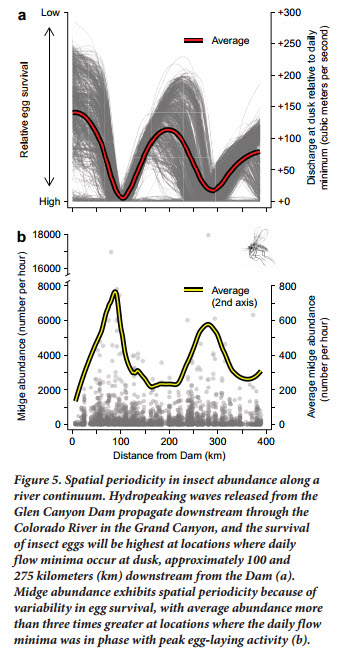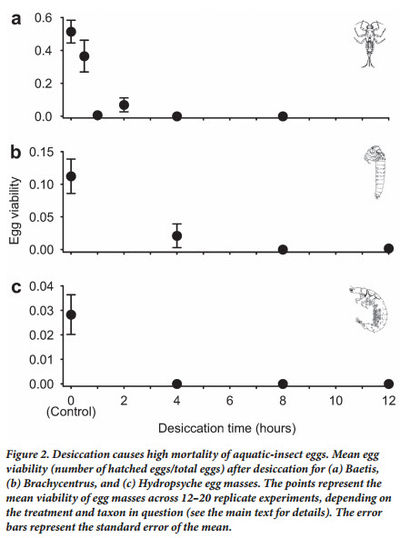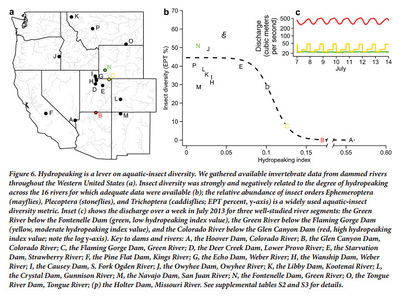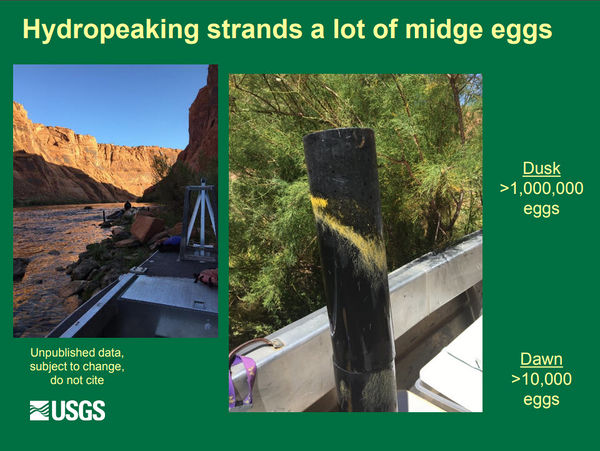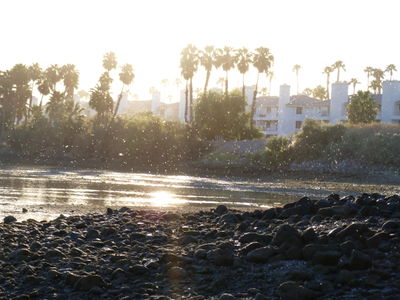Difference between revisions of "'''Oviposition and Egg Desiccation'''"
Cellsworth (Talk | contribs) |
Cellsworth (Talk | contribs) |
||
| Line 42: | Line 42: | ||
|- | |- | ||
|style="color:#000;"| | |style="color:#000;"| | ||
| + | |||
| + | Aquatic insects exhibit complex life cycles that include egg, larval, adult, and, in some instances, pupal | ||
| + | stages. Disturbances at any of these life stages can affect overall population dynamics. Yet, efforts to understand | ||
| + | the effects of disturbances, such as hydrologic alterations, overwhelmingly focus on the larval life stage of aquatic | ||
| + | insects. We evaluated the potential for load-following flows associated with hydroelectric power production to act | ||
| + | as a population bottleneck for aquatic insects via reductions in the availability and temporal persistence of optimal | ||
| + | oviposition habitats. Specifically, we quantified the oviposition habitat selectivity of Baetis spp. (Baetidae), Brachycentrus occidentalis (Brachycentridae), Chironomidae (Diptera), and Hydropsyche occidentalis (Hydropsychidae) downstream of Flaming Gorge Dam, Utah, USA. We found that all taxa except H. occidentalis preferentially laid | ||
| + | eggs on large emergent substrates located along the river edge. Peak discharge associated with load-following flows | ||
| + | substantially reduced the number of emergent substrates available for oviposition, and daily low flows exposed eggs | ||
| + | in these habitats to desiccation and drying. When subjected to experimental drying, both Baetis and H. occidentalis | ||
| + | eggs experienced nearly 100% mortality after 2 h, whereas most B. occidentalis remained viable after 8 h. Our paired | ||
| + | field and experimental results are consistent with the hypothesis that load-following flows from hydroelectric dams | ||
| + | produce a population bottleneck for aquatic insects by short circuiting recruitment processes. Environmental flows | ||
| + | that seek to improve the health of tailwater aquatic insect populations would benefit from consideration of habitat | ||
| + | requirements for all life stages of aquatic insects. [https://www.journals.uchicago.edu/doi/pdf/10.1086/710237] | ||
[[File:EPThydropeakingModel.jpg|thumb|center|400px| [http://gcdamp.com/images_gcdamp_com/7/70/Kennedy_2016_HydropowerEPT.pdf BioScience Paper] ]] | [[File:EPThydropeakingModel.jpg|thumb|center|400px| [http://gcdamp.com/images_gcdamp_com/7/70/Kennedy_2016_HydropowerEPT.pdf BioScience Paper] ]] | ||
| Line 70: | Line 85: | ||
|- | |- | ||
|style="color:#000;"| | |style="color:#000;"| | ||
| + | |||
| + | '''2020''' | ||
| + | *[https://www.journals.uchicago.edu/doi/pdf/10.1086/710237 Miller et al. 2020. Macroinvertebrate oviposition habitat selectivity and egg-mass desiccation tolerances: Implications for population dynamics in large regulated rivers. Freshwater Science] | ||
'''2016''' | '''2016''' | ||
Latest revision as of 14:23, 14 August 2020
|
|
Oviposition and Egg Desiccation Studies below Flaming Gorge and Glen Canyon DamsKennedy's 2016 Bioscience paper presents a conceptual model describing how hydropower flows could be limiting aquatic insect diversity and production by limiting the reproductive success of insects accustom to laying their eggs along the shoreline. It provides supporting data from an egg desiccation study done below Flaming Gorge Dam, light trap data collected in the Grand Canyon, and a comparison of fluctuation intensity and EPT diversity in several western US hydropower tailwaters. The paper concludes that egg desiccation from fluctuating flows is likely a leading factor in limiting aquatic insect diversity and production in tailwaters below hydropower facilities. The paper also proposes a bugflow experiment to be tested at Glen Canyon Dam as a possible mitigation for fluctuating flows made for hydropower production. |
| -- |
-- |
-- |
|---|
|
|
